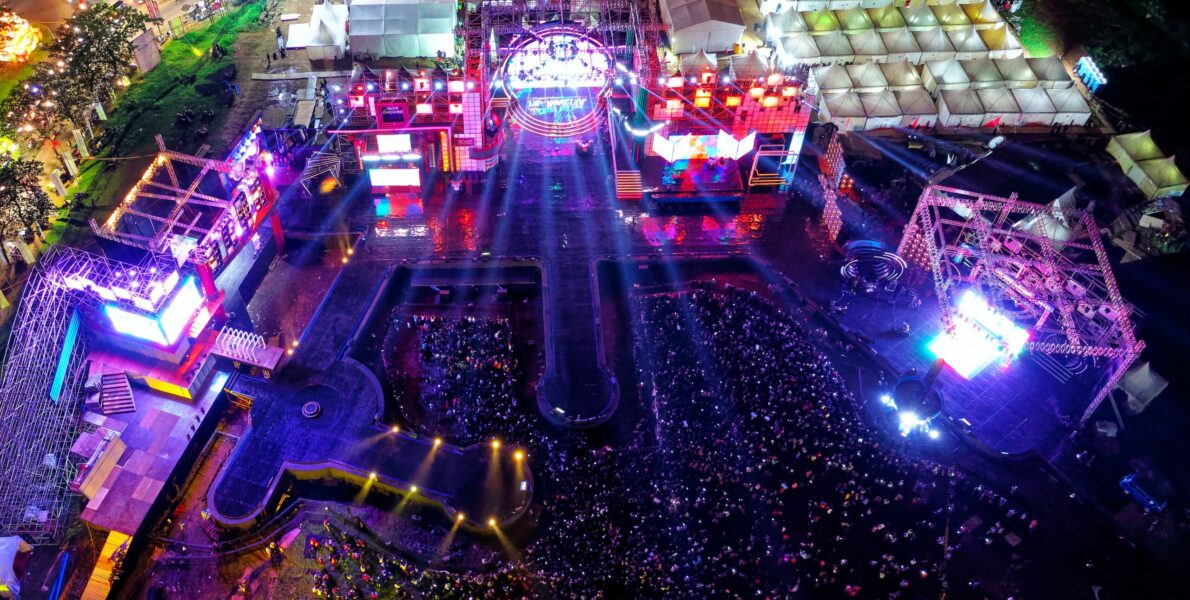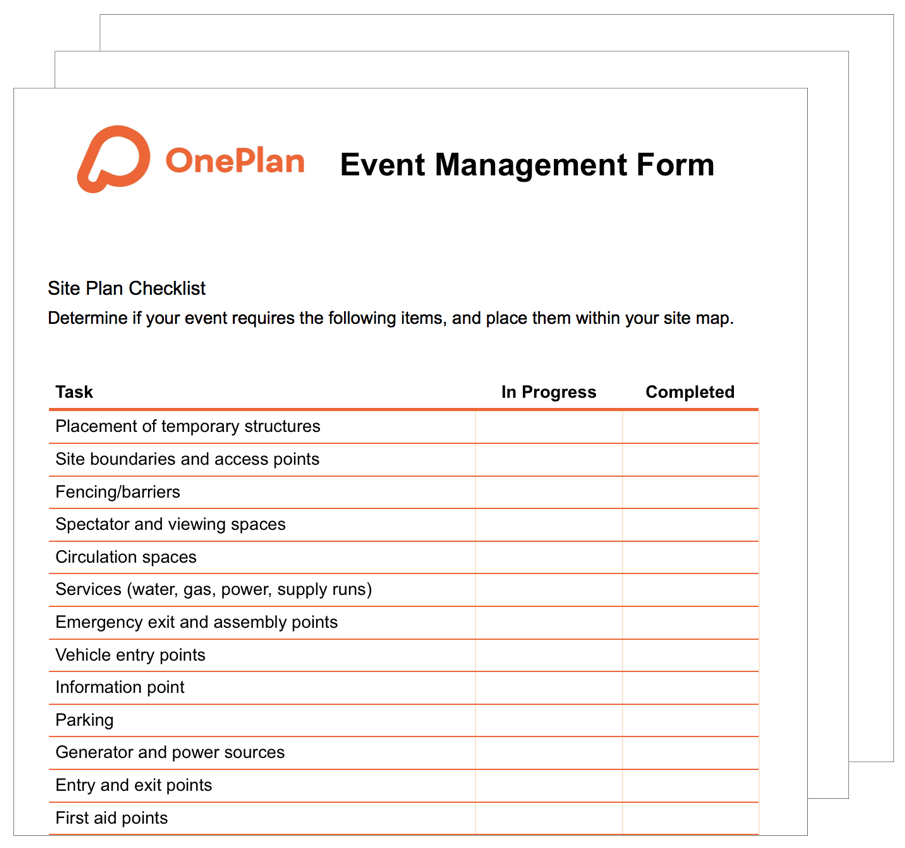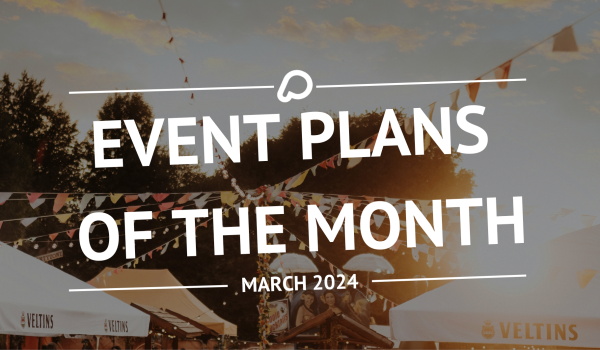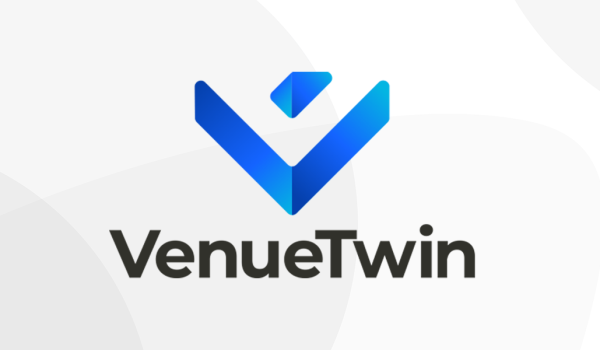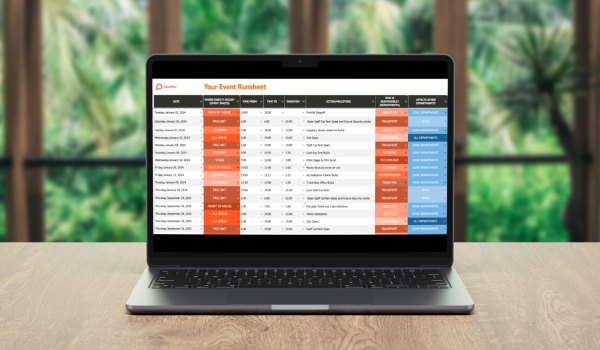Planning major events is no simple task. There’s a reason that people are willing to spend a lot of money to pass off the responsibility to a professional. Planning an event is a serious commitment that requires lots of people, time, and organization. Outdoor events come with their own unique set of challenges—from applying for permits and licensing to considering accessibility and noise nuisance. Putting together a flawless event is easier said than done, and most people don’t have the time or knowledge to do it right.
OnePlan makes planning an event a whole lot easier. OnePlan is a collaborative, real-time platform that provides the full suite of event planning, design, and management tools. It combines the best characteristics of CAD with up-to-date mapping technology in one easy-to-use solution.
If you’re beginning to plan an event or you’re halfway through and completely overwhelmed, OnePlan can help you create an event management plan—the most consequential first step you can take. You can even access OnePlan’s Free Event Management Form that will walk you through every major consideration of planning a large event. This free resource will ask you the right questions to help you prioritize your to-do list, avoid common mistakes, and get planning with confidence.
Before you get started, here are 10 steps to planning an event that you can be proud of.
Step One - Submit an Event Plan to Local Government and Request All Necessary Permits
In most cases, the first thing you need to do when planning any public event is to provide your local government with a detailed event plan, risk assessments, and proof of public liability insurance. Allow plenty of time for these to be processed (we recommend submitting them several months before the event). Connect with your venue and local government to make sure all of the boxes are ticked.
You may need certain permits and licenses to hold your event, so make sure to check with your local government to find out. Common ones include council/venue approval, road closure applications, and temporary structure approval. You’ll find a full permit and licensing checklist in the free OnePlan Event Management Form.
Step Two - Identify Key Stakeholders
For most large events, you’ll have a team of people involved. Key stakeholders may include an event manager, production manager, volunteer coordinator, steward coordinator, health and safety officer, waste management, ticketing, or a media spokesperson.
You will also be working with a number of contractors, such as food and beverage concession, vendors, temporary electricity and heating suppliers, temporary infrastructure installation teams, and animators.
It’s also essential that you have identified and have the necessary contact information for all emergency services (police, fire department, first aid, medical emergency).
Make sure that you’ve identified all of the important stakeholders early in the planning process, and that everyone knows their roles and responsibilities. Keep a running list of every stakeholder with their contact information close. You’ll need it handy throughout the planning process and during the event itself.
Step Three - Create a Programme Schedule
You will need a programme schedule to take you through the days leading up to your event, the day-of, and any post-event tasks. Make sure to indicate who is in charge of each task and be as exact as possible with timing. This schedule should be as detailed and as accurate as possible. Distribute it to all stakeholders including staff and vendors to ensure that everyone is on the same page.
Step Four - Create a Communications Plan and Schedule
Proper event communications include keeping your internal team and the outside world in the loop. You need a plan for your team to communicate throughout the day, so you should arrange for the necessary technology. You should also have a schedule of internal communications leading up to the event to ensure that every stakeholder is aware of important announcements and expectations. If you need to rent mobile phones, radios, or other communication tools, make sure it is arranged in advance and all members of your team know how they’ll be communicating on the day of the event. You may also need to prepare pre-scripted communications to be used in the case of inclement weather, traffic delays, or other public safety notices.
Your communications plan should also include the surrounding community. You need a plan to let neighboring residents and businesses know about your upcoming event. Include reminders of any noise bylaws or extensions, traffic or parking applications with the city, and how you will be advising the community of your event. If you will be including a Good Neighbour benefit, such as complimentary admission, make sure to outline how you will track and validate that benefit.
Step Five - Know Your Audience
It’s essential to have a general profile of the audience you’ll be serving at your event. Will children be present? Will there be animals? How many people will be in attendance? Having a solid grasp on your audience profile will allow you to make better decisions in all areas of planning the event.
It’s also essential to consider accessibility. According to The World Bank, 15% of the world’s population lives with a disability. You need make sure your site is accessible, not only to satisfy legal requirements, but to welcome an often underserved community. Please consult with your local government to ensure your event satisfies all local accessibility requirements. For a high-level checklist for event accessibility, refer to Cornell University’s Accessible Meeting and Event Checklist.
Step Six - Get to Know Your Site/Venue
When planning an event, you need to know your venue inside and out. Do this early in the planning process to identify any challenges before it’s too late to address them. You can generate a map of your venue in OnePlan. A proper map will allow you to determine what items your event requires and where they should be placed at the venue. For instance, you can sketch out emergency exits, generator and power sources, and the placement of temporary structures. As for the less glamorous facilities, you’ll also need to know how many toilets are available at the event, and create a waste management and recycling plan. No matter how wonderful most elements of your event are, no one will have a good time if they can’t find a toilet or a garbage bin. You can plot out where toilets and bins will go in OnePlan as well.
For help with getting to know your venue, check out section two of the OnePlan Event Management Form.
Step Seven - Consider the Noise
Obviously, large outdoor events are likely to produce some noise. That’s why a noise management policy is a must when organizing an event and choosing a venue. You may have to engage with a noise pollution team or similar entity if your event is likely to impact surrounding areas. In your policy, consider providing neighbours with an event day contact in case they need to make a complaint, employing a professional sound engineer, and documenting plans you have in place to minimise any elements of your event that may cause noise nuisance. Make a checklist of locations on and off site to measure decibels and plan accordingly.
Step Eight - Assemble a Team
For a successful event, you’ll need to have enough staff, and they’ll need to be organized. Figure out how many people you will need to plan and run your event successfully. Create a simple organizational structure that will enable everyone on your team to understand who is responsible for what.
It’s also recommended that you staff professional, licensed security staff to help with all elements of a large gathering, such as stage/performer safety and crowd control. The number of security professionals you will need depends on factors like location, audience demographic, and the number of attendees. Work with your security vendor to plan accordingly.
The larger the team, the more important it is to train your staff and volunteers, and to make them aware of your event’s specific standards. They should be fully aware of what their duties are—and what they are not.
Step Nine - Think Through Crowd and Traffic Management

This is where a map becomes really important. Crowd management and traffic management are absolutely essential in ensuring a safe and successful event. Map out public circulation routes and restricted routes in OnePlan. Will any vehicles be allowed on site (think emergency vehicles and parking)? If so, you’ll need to outline a vehicle policy and all entrance and exit routes.
You should also outline any traffic, transport, or parking plans for your event. How will your audience travel to and from your event? Map out the various transport links around the event site, and make a plan to promote these to your audience. This is also a good time to check in on your road closure needs!
Other considerations include special effects and COVID-19 guidelines. There is a lot to think about when it comes to safety, and it is not the place to cut corners. Utilize the OnePlan Event Management Form to make sure you check all of the boxes.
Step 10 - Safety First (or in this case, tenth)
Nothing is more important than ensuring your event is safe for participants. Following national health and safety laws and guidelines is a great start and will offer a guide to meeting requirements for your event to take place legally and safely. Consider fire safety, site evacuation, and lost children policy. You can work through all of this in the OnePlan Event Management Form and map out things like a Lost Children information desk in your OnePlan map.
You’ll also need to consider the possibility of severe weather cancellation. How would you let people know if the event is cancelled and how will your event team make that decision in the first place?
Data collection should also be part of your safety plan. With modern technology, most people are rightfully concerned about their privacy. If your event is collecting data from attendees, check that your event is compliant with the latest data privacy laws and guidelines.
Other considerations include special effects and COVID-19 guidelines. There is a lot to think about when it comes to safety, and it is not the place to cut corners. Utilize the OnePlan Event Management Form to make sure you check all of the boxes.

